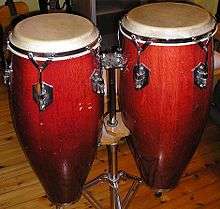Jota
Jota may refer to:
Jota (singer)
Jota (born Lee Jonghwa on February 15, 1994) is a South Korean singer in the boygroup Madtown. The group debuted under the label J. Tune Camp in 2014. Jota is a rapper with skills in acrobatics. He appears on the sports variety TV show Cool Kiz on the Block for Judo and Volleyball. He appeared on Let's Go Dream Team 2 as a fixed member. Jota participated in Judo over eight years before having to quit because of an injury.
Career
2014: Debut with YOLO and MAD TV
On September 24, 2014, J. Tune Camp announced the debut of their second boy group through a teaser image. This marks J. Tune Camp's boy group debut after 5 years, and group debut after 2 years (before Two X left J. Tune Camp). For the next two days, J. Tune Camp started introducing its members, including Moos and Buffy which are members of Pro C which debuted earlier. They started off with 3 members (namely Moos, Daewon and Lee Geon) on the first day and the remaining 4 members (namely Jota, Heojoon, Buffy and H.O) on the second day.

Jota (music)
The jota (Spanish: [ˈxota]; Catalan: [ˈdʒɔta]; Aragonese: hota [ˈxota] or ixota [iˈʃota]; Asturian: xota [ˈʃota]; Galician: xota [ˈʃɔta]) is a genre of music and the associated dance known throughout Spain, most likely originating in Aragon. It varies by region, having a characteristic form in Aragon, Catalonia, Castile, Navarra, Cantabria, Asturias, Galicia, La Rioja, Murcia and Eastern Andalusia. Being a visual representation, the jota is danced and sung accompanied by castanets, and the interpreters tend to wear regional costumes. In Valencia, the jota was once danced during interment ceremonies.
The jota tends to have a 3/4 rhythm, although some authors maintain that the 6/8 is better adapted to the poetic and choreographic structure. For their interpretation, guitars, bandurrias, lutes, dulzaina, and drums are used in the Castilian style, while the Galicians use bagpipes, drums, and bombos. Theatrical versions are sung and danced with regional costumes and castanets, though such things are not used when dancing the jota in less formal settings. The content of the songs is quite diverse, from patriotism to religion to sexual exploits. In addition to this, the songs also have the effect of helping to generate a sense of local identity and cohesion.

Conga
The conga, also known as tumbadora, is a tall, narrow, single-headed drum from Cuba. Congas are staved like barrels and classified into three types: quinto (lead drum, highest), tres dos or tres golpes (middle), and tumba or salidor (lowest). Congas are traditionally used in Afro-Cuban genres such as conga and rumba, although they are now very common in some other forms of Latin music, including descarga, Afro-Cuban jazz, salsa, songo, merengue and Latin rock.
Characteristics
Most modern congas have a staved wooden or fiberglass shell, and a screw-tensioned drumhead. They are usually played in sets of two to four with the fingers and palms of the hand. Typical congas stand approximately 75 centimetres (30 in) from the bottom of the shell to the head. The drums may be played while seated. Alternatively, the drums may be mounted on a rack or stand to permit the player to play while standing. While they originated in Cuba, their incorporation into the popular and folk music of other countries has resulted in diversification of terminology for the instruments and the players. In Cuba, congas are called tumbadoras.

Conga (music)
The term conga refers to the music groups within Cuban comparsas and the music they play. Comparsas are large ensembles of musicians, singers and dancers with a specific costume and choreography which perform in the street carnivals of Santiago de Cuba and Havana.
The instrumentation differs between congas santiagueras and congas habaneras. Congas santiagueras include the corneta china (Chinese cornet), which is an adaptation of the Cantonese suona introduced in Oriente in 1915, and its percussion section comprises bocúes (similar to African ashiko drums), the quinto (highest pitched conga drum), galletas and the pilón, as well as brakes which are struck with metal sticks.Congas habaneras lack the corneta china but include trumpets, trombones and saxophones, and they have a different set of percussion instruments: redoblantes (side drums), bombos (bass drums), quinto, tumbadora (the lowest pitched conga drum), and metallic idiophones such as cowbells, spoons, frying pans and rims.

Conga line
The conga line is a novelty dance that was derived from the Cuban carnival dance of the same name and became popular in the US in the 1930s and 1950s. The dancers form a long, processing line, which would usually turn into a circle. It has three shuffle steps on the beat, followed by a kick that is slightly ahead of the fourth beat. The conga, a term mistakenly believed to be derived from the African region of Congo, is both a lyrical and danceable genre, rooted in the music of carnival troupes or comparsas.
Origin
The conga dance was originally a street dance in Cuba. The style was appropriated by politicians during the early years of republic in an attempt to appeal to the masses before election. During the Machado dictatorship in Cuba, Havana citizens were forbidden to dance the conga, because rival groups would work themselves to high excitement and explode into street fighting. When Fulgencio Batista became president in the 1940s, he permitted people to dance congas during elections, but a police permit was required.
Podcasts:

